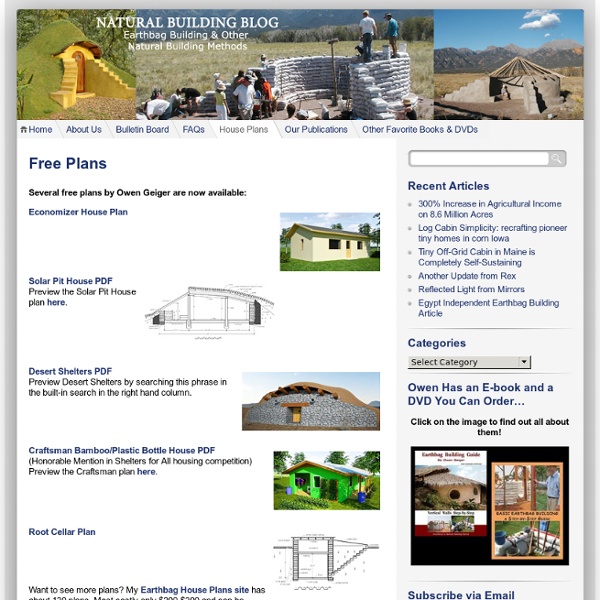



Geiger Research Institute of Sustainable Building Home Page earth-sheltered home Also known simply as an earth home, a dwelling that is partially or totally underground (see underground home) or that has earth berms around some or all of its exterior walls (see bermed earth-sheltered home). Earth-sheltered homes can be tailored to a wide range of climates and a variety of types of building sites – even flat ones. Combined with passive solar design, an earth-sheltered home can save tens of thousands of dollars in fuel bills over a lifetime. Earth-sheltered homes are comfortable, affordable and energy efficient. Advantages There are many advantages to earth-sheltered construction. Because earth covers part or all of their exterior, earth-sheltered houses require less outside maintenance, such as painting and cleaning gutters. Finally, earth-sheltered houses can cost less to insure because their design offers extra protection against high winds, hailstorms, and natural disasters such as tornados and hurricanes. Disadvantages Climate and topography Soil Groundwater level
DIY smart materials The piano box is a (somewhat polyphonic) paper toy synthesizer with 12 keys, each triggering a tone and an LED. The keys are a set of capacitive sensors, made of copper tape, controlled by an Arduino Mega running the ... Last summer a few of us at NYC Resistor made the JelTone, a jello-based toy piano that can be eaten and played. Now, Marianne Cauvard and Raphael Pluvinage created the beautiful Noisy Jelly, a kit to make your own ... noisy jelly :: an agar-based musical game Organic Materials Jordan Bunker from Pumping Station: One has been making his own conductive ink based on a paper written by researchers at the UIUC Materials Research Laboratory. hackerspace-made conductive ink Conductive Materials, Techniques University of Illinois researchers explain how they make their conductive ink on this step-by-step tutorial. The Resistor JelTone is an edible toy piano created by NYC Resistor members Ranjit Bhatnagar, Astrida Valigorsky, Mimi Hui and myself for the Jello Mold Competition. Tools
Advantages of Partially Submerged Houses Environmentally friendly families often convert their houses to run more efficiently, or use heating and recycling devices to limit their damage to the planet. One of the more extreme methods of living in environmentally friendly houses is to move into a custom built partially submerged house. These houses are built into the sides of hills, or partially underground, so that they can harness the natural geothermic energy of the house. While there are not very many of these houses available at present, they may become more popular as people become more concerned about their energy consumption. There are a few different types of partially submerged houses, and each one is designed to have slightly different advantages. Earth Sheltered Buildings Some of these geothermic houses are called Earth Sheltered buildings. Hill-Built Houses Partially submerged buildings can be built by digging into hills, and building part of the house within that excavation. Water-Based Houses
Practical self sufficiency through food skills. Build a Barn Greenhouse I have been dying to show you my Mother's Day present. For years and years and years, I've been wanting a greenhouse. Up here in Alaska, the only way you are going to eat cucumbers or tomatoes off the vine is to grow a greenhouse. Or steal from your Mom's greenhouse. But every year, every spring, we just have so much going on, the greenhouse never happens. Next year, we say. I thought next year would never come. We were already saying next year this year. So I tried something different I said, what about tonight? We started cutting boards at 4PM that night. By that evening we had completed all of the wall framing. I was so excited couldn't stop myself from sharing a pic via instagram and twitter! That first night, we actually called it an early night! The next morning, we got up and assembled the panels in the driveway. We used roofing tin for the side panels. The corners are trimmed in simple metal flashing. Wrap the top rib of the corrugated roofing! All of the panels are predrilled We love it.
Bookshelf Porn TetraBox Light Liquid to Light Designer Ed Chew takes a green step in the right direction with the TetraBox lamp, a light object made from discarded drink packets that would have otherwise ended up in landfills already packed to the brim. The design is achieved by unfolding the packets and refolding them into hexagonal and pentagonal sections that are then pieced together to form a geodesic sphere or any other desired shape. Designer: Ed Chew
Fabriquer soi même de la Colle Bio Comment fabriquer de la colle efficace et vraiment non toxique ? C’est facile : il suffit de quelques minutes, et d’utiliser des ingrédients naturels, comestibles et faciles à trouver pour réaliser une colle maison qui ne dégage aucune fumée ni aucun composé volatile. De plus en plus on a fabriqué de la colle de farine, ce qui a donné notre colle d’amidon moderne, et sert à coller des papiers entre eux par exemple. La colle blanche très présente dans les écoles dans les années 70 en est dérivée, et était à l’époque parfaitement comestible, fabriquée à partir de farine et d’huile d’amande amère. La colle d’amidon est, elle, fabriquée à partir d’une farine, de blé ou de riz gluant, et de l’huile d’amande amère, sans compter quelques conservateurs. Dans tous les cas, il ne s’agit ni de coller des meubles, ni d’utiliser la colle en zones très humides ou très chaudes, mais cette recette de colle bio est vraiment efficace et colle réellement une fois sèche. Comment préparer sa colle maison